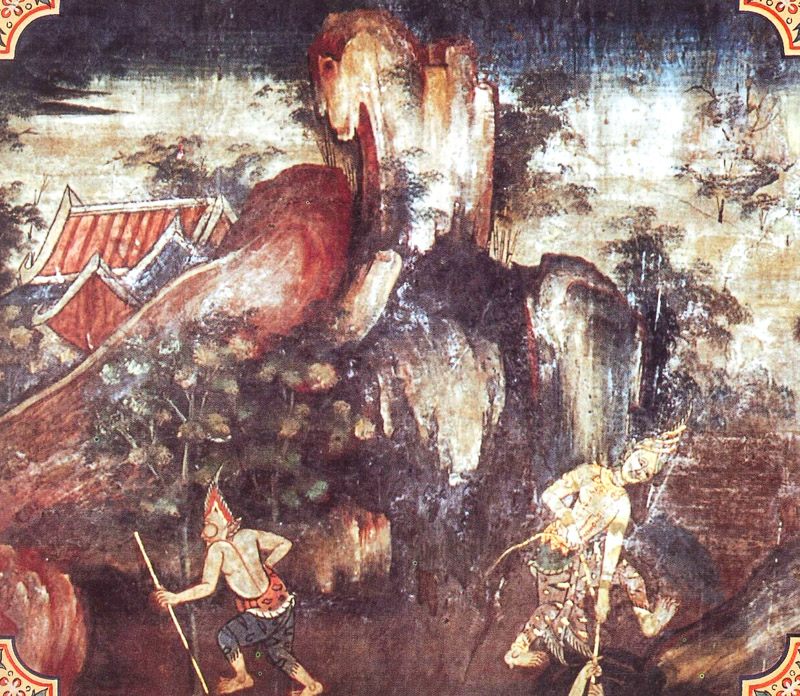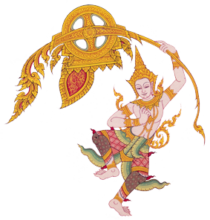
The Bodhisatta was once an ascetic. The king had gone off to fight a battle in a border region and he lost, so he fled on his elephant to safety in the forest. The next morning, while the Bodhisatta was out gathering wild fruit, the king passed by his hut. He looked for a waterpot, but found none, and there was no bucket or rope at the well. He tied the rope from his elephant to his lower garment and used this to climb down the well, but he could not quite reach the water. He was so exhausted and thirsty that he jumped down, feeling that dying with water was better than dying without.
When the Bodhisatta returned home that evening, he got the king out with a ladder and took care of him for a few days, letting him fully recover his strength before heading back to his city. When the king left, he made the Bodhisatta promise to come visit someday; and six weeks later, he did.
The Bodhisatta slept in the royal park, and the next morning he went to the palace to seek food. The king greeted him warmly and showed him great honor, letting him sit on the throne and share his food. The king built a hut and a covered walkway in the park, provided for all the Bodhisatta’s needs, and ordered the gardener to follow his orders for as long as he chose to stay.
The king’s advisors felt that the ascetic was unworthy of such honor and took their concerns to the crown prince, who agreed to speak to his father. The king then told them how the Bodhisatta had saved his life and said he could never repay him enough, even if he handed over his kingdom. Now understanding the reason for the king’s support, nobody resented the Bodhisatta anymore.
In the Lifetime of the Buddha
The grateful king was an earlier birth of Ananda, one of the Buddha’s top disciples. When a king received one thousand splendid, expensive robes, he gave one to each of his five hundred wives, and they, in turn, gave them to Ananda, who was their dharma teacher. The next morning when they had breakfast, the king asked his wives why they were not wearing their beautiful new clothes. When they told him, the king figured Ananda was secretly making money by selling them, and he got angry, so he went to confront him.
He asked Ananda why he took five hundred robes when the Buddha’s rules forbid his disciples from having more than three. Ananda explained that though he accepted the gift, he did not keep it; instead he gave robes to other disciples who needed new ones. Then, to explain to the king that no offerings were wasted, he told what happened to old robes when disciples got new ones. First they were turned into cloaks, which were later sewn into shirts, which then became bed sheets, then mats, then towels, then finally the worn fabric was chopped up into bits and mixed into mortar for building houses. The king was pleased with what he learned and gave Ananda the other five hundred robes.
Ananda passed on this new batch to a young disciple as a thank you for all the support he gave him—things like sweeping his room, serving him food and drink, cleaning the bathroom—and let him distribute them to other young disciples. Some disciples asked the Buddha if it had been proper for Ananda to give such a large gift to someone inferior to him. The Buddha explained that Ananda’s gift was acceptable because it was given out of gratitude: it was simply a matter of one good deed deserves another. Then the Buddha told them this story so they knew that in the past he himself had once been rewarded by a king because he had done a good deed for him.
